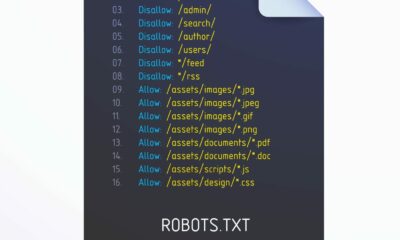MARKETING
The new identity landscape: A marketer’s guide

The perfect storm has been brewing around digital identity for some time.
We’ve got Google’s ever-impending deprecation of third-party cookies set to take effect in 2023; Apple’s decision to phase out its mobile identifier for Advertisers (IDFA) to track users for targeting, personalization and attribution; and most recently, Google’s announcement that they are planning to follow Apple’s lead and pull the plug on targeting across Android devices.
Those changes, paired with new state-by-state legislation for consumer privacy, force advertisers to rethink almost everything they know about digital marketing.
What do these changes mean to you?
So, what do all these changes mean to you, the marketer? Well, let’s look at the numbers. According to current data from StatCounter.com, Chrome makes up around 65% of the total share of consumer browsing, followed by Safari at roughly 19%. Together, that makes up almost 85% of browser usage that will all but go dark for everything from audience building and retargeting to personalization and multi-touch attribution. According to mobile analytics company Flurry, the stats are now equally challenging for mobile ad targeting, with only 18% of Apple users opting in for app-level tracking.
Fortunately, the adtech wagons are circling and peddling fast and coming to market with a host of privacy-compliant identifiers allowing marketers to target prospects, personalize ads and conduct measurement studies. This new identity landscape is changing daily, with newcomers, consolidations and integrations happening everywhere. For the marketer who wants a birds-eye view of the leading players, I’ve laid out who they are and how they are building their identity graphs.

Graph Key:
- PII-based/authenticated: Large database of personally identifiable information to construct person-based IDs and identity graphs.
- Probabilistic/inferred: A small truth-set of data used to build audiences with a probability of being accurate.
- Connected TV: A CTV ID allows advertisers to work strictly within CTV walled garden to create, customize, activate and measure audience performance.
- CDP/EDP: Platform IDs provide identity resolution tools to collect and organize first, second and third-party data from multiple sources.
- APP SDK: Captures app registration browser data used to identify and match users to one or multiple devices.
- Hashed Email: Registered emails are anonymized and these Hashed Emails (HEM) IDs are designed to act as a universal match-key for targeted adverting.
Get the daily newsletter digital marketers rely on.
The challenge with a siloed identity landscape is that many proprietary identifiers work well within their own environments but face challenges when connecting to other identifiers for activation or measurement. This gap in the advertising supply chain of identifiers has led to a new crop of identity players developing interoperable IDs with the promise to serve as the translation layer to bring together and unify disparate identifiers that a marketer may be used for targeting, personalization and measurement. While Unified ID 2.0 has taken the lead position in this race, the jury is still out on how well it and other connected IDs will put you, the marketer, back in the driver’s seat.
While the identity landscape is bound to keep changing in the coming year, Marketers can get their houses in order and be ready for future changes. The below checklist outlines the top identity-centric moves to consider in 2022.
Get acquainted with clean rooms
Clean rooms were launched as a secure data hub where marketers can store their data and create second-party audiences with cross-over brands or publishers. Clean rooms have grown into a more extensive and robust set of tools for brands and agencies to maintain privacy and compliance while housing and unifying multiple data types. Clean rooms are also evolving to leverage their ability to join datasets and create various input/output integrations to power end-to-end marketing. This can include all applications in the supply chain, from segmentation, activation, measurement and overlap analysis to reach and frequency analytics and consumer journey analysis.
As the clean room market has grown, differentiation between the types and functionality of Clean Rooms is emerging.
- Neutral providers: The landscape has grown, and many specialties of pure-play providers are in the space, such as LiveRamp and Infosum.
- Walled garden: Amazon Marketing Cloud, Facebook Advanced Analytics; while you can enrich your own first-party data within their walls, they are not interoperable and require extra data science support to analyze results.
- Inside platform: Cloud storage businesses such as Snowflake and some other marketing companies like Epsilon are also offering clean room services as part of their larger technology stack.
Across the above buckets, the functionality of Clean Rooms is growing as well. Publishers are soliciting the help of clean rooms to empower marketers to connect their first-party data to impression logs, audience segments and user attributes to deliver more prosperous, more actionable consumer insights.
Additionally, clean rooms have stepped into the customer journey analysis game. They are giving comprehensive and accurate data about their consumer’s interests and behaviors while not revealing personally identifiable information from tapping into publisher data to deliver better experiences for consumers and more effective campaign performance.
Read next: Why we care about data clean rooms
Build or license a consent management platform
While privacy is at the root of this shift in overall identity management, many marketers may still be exposed to risk as more states follow California’s CCPA/CPRA regulations and require all marketers to get explicit consent for targeted marketing. While outsourcing this to a consent management platform (CMP) may be one route, you can follow the federal and various state guidelines to ensure you have the proper notice in place. At a high level, these include the one-click ability to opt out of targeting marketing, a clear statement whether data is sold, the option to give permission to share data, and a data ethics policy.
Beyond the new legislation, a consent management strategy is about building trust with your customers, and at the root of that is giving them transparency and choice. CMPs empower marketers with safety protocols to ensure accurate data and consent are a part of every customer record. Consent solutions enable customers to see and control the data you have collected. Marketers can use these tools to show their customers that privacy matters. Transparency is crucial and builds even more trust with your customer base.
Manage your data in a CDP/EDP
Another way to get a jump start on the changing identity landscape is to standardize your customer data and unify all your complex customer journeys to simplify personalization, increase customer engagement and manage customer lifetime value. A CDP will unify offline and online customer touchpoints, stitching together actionable customer profiles and activating data across relevant content and audiences.
Some marketers may need to look beyond CDPs and utilize Enterprise Data Platforms (EDPs) for a more robust solution. Unlike CDPs, EDPs offer more robust features, including real-time APIs from Facebook and Amazon to Google and TikTok, to name a few. An EDP’s real-time data streaming feature offers first-party data tagging, a proprietary identity graph and a data backbone for customer data enrichment and audience modeling.
Looking ahead to the impending changes in identity, marketers can take comfort knowing that while the big privacy reset seems chaotic now, a host of new tools is afoot to help us all navigate a post cookie world. And while much of the changes are out of our control, there are things marketers can do now to ease into the transition and make sure we don’t lose track of our most important asset, our customer data and the relationships it allows us to build.
Opinions expressed in this article are those of the guest author and not necessarily MarTech. Staff authors are listed here.










You must be logged in to post a comment Login